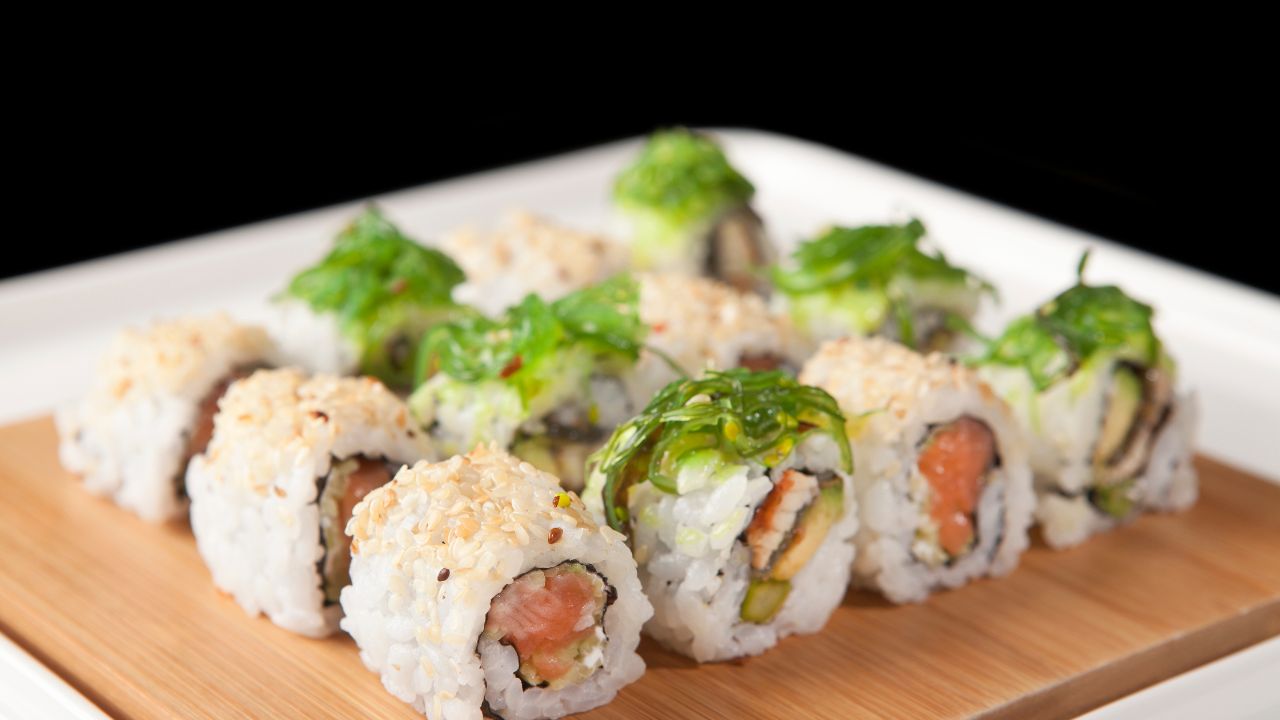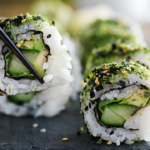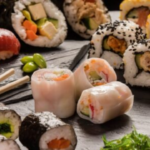
Sushi, a global culinary phenomenon. The national Japanese dish that has conquered the world in a way comparable only to Italian pizza. So here is a set of interesting facts you should know before you go to sushi restaurants.
Interesting facts about the history of sushi - sushi restaurant presents
1: "Sushi" or " zushi"? "Sushi" is generally used when type of sushi is not specified, and 'zushi' describes a particular type of sushi, such as nigiri-zushi or maki-zushi.
(2) Outside Japan, we associate sushi with raw fish, while the word sushi refers to rice, not fish. Served in the Japanese fashion, a piece of raw meat (not only fish, but also beef or horse meat) is called sashimi. Sushi means 'sour' and the word alludes to the origins of the dish, even though the sushi is no longer a fermented dish. But in the beginning it was.
3 Sushi is synonymous with Japanese cuisine today, but sushi did not originate in Japan. The origins of sushi can be traced back thousands of years to the Neolithic period in China, when people preserved excess fish by fermenting them salted and gutted in barrels of cooked rice. The earliest records of a similar Chinese dish date back to the sixth century. Other Asian cultures also used similar preservation methods. In the past, fermented rice was discarded, then people started to cut it up along with the fish. Still later, they began to add rice vinegar, reducing the fermentation time from months to a few days. It is believed that the dish arrived in this form in Japan, where it evolved further to take its present form around two hundred years ago. Today, vinegar is added to sushi rice, to mimic its fermented flavour and to provide it with antibacterial properties.
4. the most popular accompaniment to sushi is definitely salmon, but this was not always the case. Until recently, the Japanese prepared sushi with different types of fish, but not with salmon, because Pacific salmon is susceptible to parasites and therefore it is not recommended to eat it raw. In the 1960s, Norwegians started to raise salmon on fish farms and the parasite problem was eliminated, a salmon sushi became popular in Norway. It only became popular in Japan in the 1990s.
Interesting facts about eating and preparing sushi
5. Sushi is traditionally eaten with fingers, not chopsticks.
6 To earn the title of 'Itamae' ('in front of the counter'), that is, to become a qualified sushi chef, you need to train for at least several years. You start out as the lowest-level cleaner, and then, patiently gain the next rungs, starting with the learning how to make rice for sushi. You have a long way to go before you get anywhere near a chopping board. Around the world, sushi restaurants in Warsaw INCLUDING. One does not have to be Japanese to be recognised as an Itamae, it is sufficient for non-Japanese to prove themselves worthy of such a title. Itamae traditionally wear a uniform consisting of a white hat, white coat and apron, and often carry a knife in a scabbard at their belt.
7 Women in ancient Japan were denied the task of preparing sushi because of the belief that their warmer and perfume-sprinkled hands could impair the taste and quality of the dish. A prejudice rightly forgotten today.
8 Sushi is almost a must in the daily diet of Japanese people. Japan has the lowest percentage of obese people of any developed country at 3.3%. Sushi is one of the keys to solving the mystery of the longevity of the Japanese, who live an average of 84 years. Americans live an average of 78 years. Poles? 76...
Interesting facts about sushi in Poland
9 The first sushi restaurant, Tsubame, opened in 1991 on Foksal Street in Warsaw. The owner was Mr Shin Yasuda. Sushi restaurant went bust, but from this seed grew a bountiful crop in the form of many sushi restaurants not only in Warsaw, but all over Poland.
10. It has long been an untrue belief that you can only buy fresh sushi in a Polish restaurant on Thursdays. Rubbish! Many years ago, fresh seafood (including fish) was indeed delivered on Thursdays (sometimes also on Tuesdays). Today sushi restaurant can order fresh fish any day of the week.
Written by Igor Maćkowski













